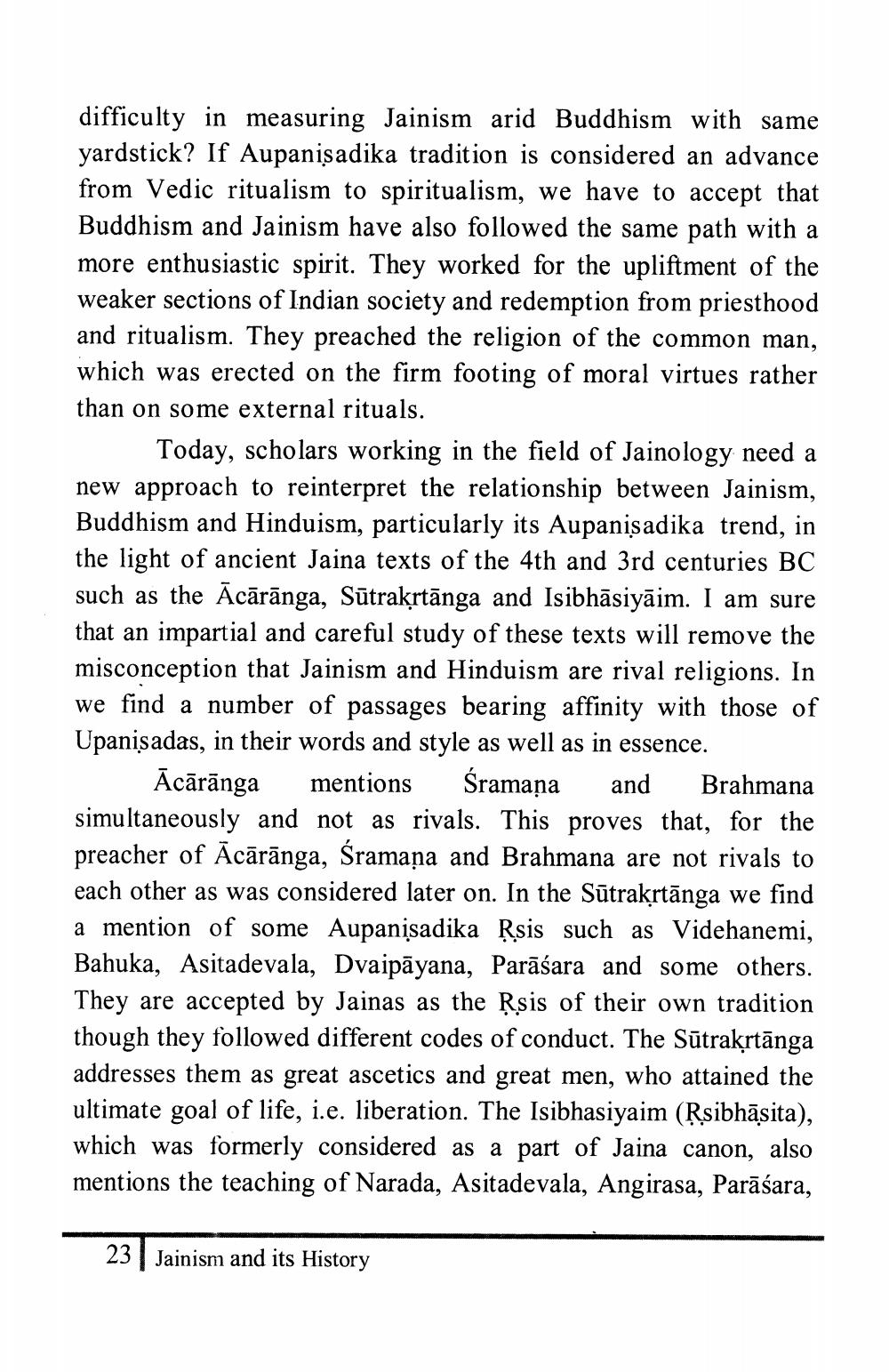________________
difficulty in measuring Jainism arid Buddhism with same yardstick? If Aupanişadika tradition is considered an advance from Vedic ritualism to spiritualism, we have to accept that Buddhism and Jainism have also followed the same path with a more enthusiastic spirit. They worked for the upliftment of the weaker sections of Indian society and redemption from priesthood and ritualism. They preached the religion of the common man, which was erected on the firm footing of moral virtues rather than on some external rituals.
Today, scholars working in the field of Jainology need a new approach to reinterpret the relationship between Jainism, Buddhism and Hinduism, particularly its Aupanişadika trend, in the light of ancient Jaina texts of the 4th and 3rd centuries BC such as the Ācārānga, Sūtrakrtānga and Isibhāsiyāim. I am sure that an impartial and careful study of these texts will remove the misconception that Jainism and Hinduism are rival religions. In we find a number of passages bearing affinity with those of Upanisadas, in their words and style as well as in essence.
Ācārānga mentions Sramana and Brahmana simultaneously and not as rivals. This proves that, for the preacher of Ācārānga, Śramana and Brahmana are not rivals to each other as was considered later on. In the Sūtrakrtānga we find a mention of some Aupanısadika Ķsis such as Videhanemi, Bahuka, Asitadevala, Dvaipāyana, Parāśara and some others. They are accepted by Jainas as the Rsis of their own tradition though they followed different codes of conduct. The Sūtrakrtānga addresses them as great ascetics and great men, who attained the ultimate goal of life, i.e. liberation. The Isibhasiyaim (Rsibhāsita), which was formerly considered as a part of Jaina canon, also mentions the teaching of Narada, Asitadevala, Angirasa, Parāśara,
23
Jainism and its History




